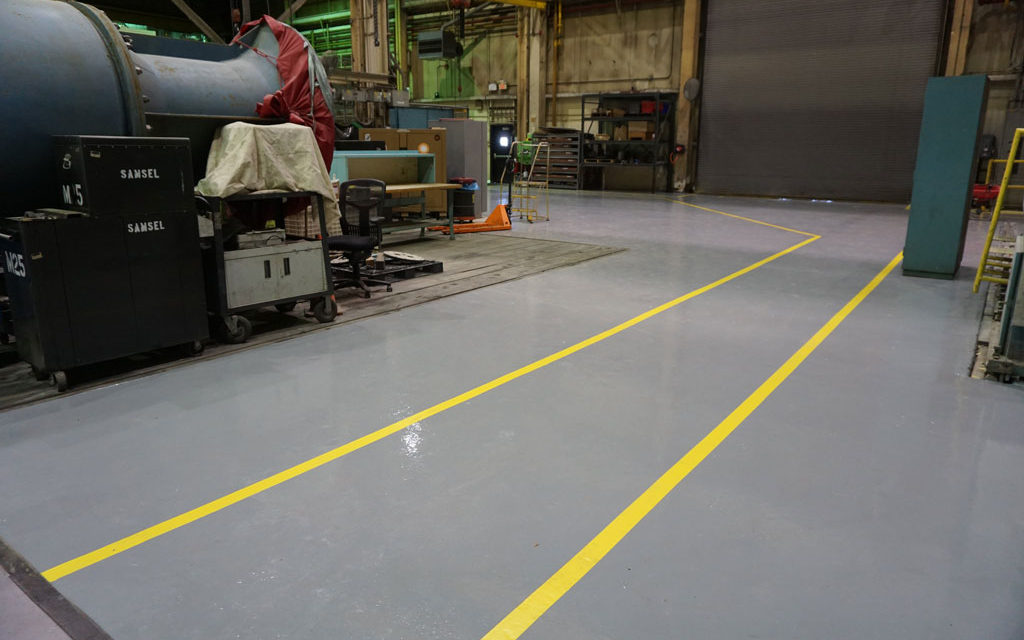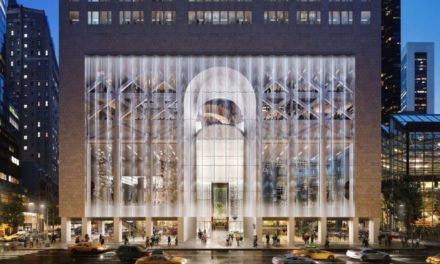This flooring project was completed for one of the largest electrical generation plants in New Jersey. More specifically the new flooring system would be installed in the machine shop of the facility. In the machine shop old generators and parts were refurbished which, required heavy machining equipment, forklifts, and a 50-ton hoist. Due to the heavy loads and substances required to complete daily machine shop operations, the floor needed to have excellent scratch, abrasion, impact and chemical resistance.
To complete the project, High Performance Systems, a local resinous flooring contractor was hired to replace the existing 14,000 sq. ft. floor with a new epoxy system in 3 days. To avoid a plant shutdown, the project was scheduled to start on New Year’s Eve.
To meet the client’s timeline, the first day of the project required 2 crews to work a 14-hour shift to complete all the surface preparation and to lay down the prime coat. For safety, a OSHA certified compliance officer, Tom Pryor, was on the job site at all times and workers were outfitted with safety glasses, latex gloves, and respirators – when dust was present.
Before the project started, any equipment that could be moved was. As you could imagine, there is a lot of heavy machinery that was bolted to the floor and could not be moved. To deal with this Stephen Smedley, Vice-President of High Performance Systems, said “we created keyways to anchor the floor because any open spots in the floor is a weak point.” To create the keyways, the High Performance crew sued right angle grinders to edge around the equipment and create a bevel edge. The beveled edge gave the epoxy a footing where it could terminate so there were no seams in the flooring system.
The previous floor was an old epoxy floor that presented a safety hazard to workers as it was chipping and cracking. To make sure the coating system directly adhered to the concrete, the surface preparation had to be thorough and any remnants of old epoxy had to be completely removed.
To remove the existing flooring system first, a diamond grinder with polycrystalline diamond inserts (PCD’s) were used. These inserts can remove most of the epoxy but are not capable of profiling the concrete. To get the manufacturer’s recommended concrete surface profile (CSP) the floor was again diamond grinded but this time with 30 grit inserts. To protect the facility and workers from airborne particulates a HEPA filtered vacuum, the S36 Pullman Ermator, was used while diamond grinding with a Lavina 30G-X.
After the floor was ground down to the concrete substrate, the entire surface was vacuumed to remove any dust particulates that may have been left behind. The last surface preparation step was to solvent wipe the entire floor to ensure any remnants of old epoxy were removed thereby, ensuring the new flooring system would directly bond to the concrete substrate.
The first part of the flooring system was General Polymers 3579 which is a high solids epoxy primer. This product is low in viscosity to promote penetration of the concrete substrate thus, ensuring the flooring system directly adheres to the substrate. The primer has a low modulus of elasticity, so it acts as a stress reliever for flexion between the concrete and the rest of the flooring system caused by temperature changes. The primer was installed using a roller and without a broadcast, or “neat” as Smedley puts it.
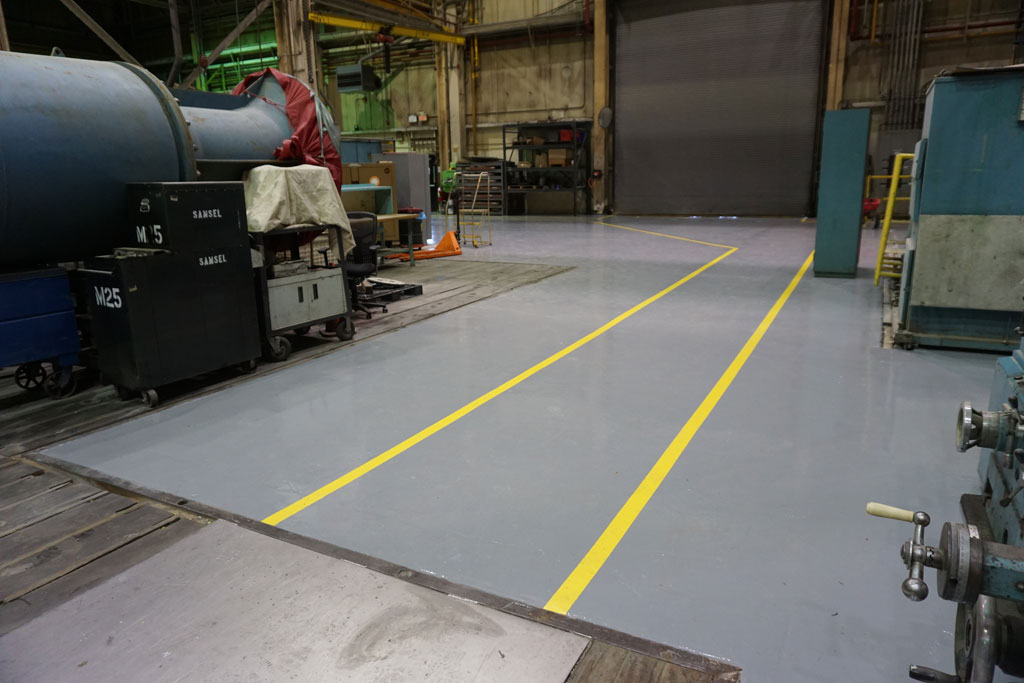
While High Performance expected the cure times to be slower than normal, due to the sub-freezing temperatures outside, they did not anticipate how cold the surface temperature was going to be. The prime coat took an extra 12 hours to cure which, significantly put High Performance behind schedule. “After the prime coat, we started using mobile heaters throughout the facility, to ensure all of our coatings cured on time,” Smedley said.
The following day 105, a 100% solids epoxy slurry system, with thickening agents were installed. This product is self-leveling and provides exceptional chemical and stain resistance. The mix consisted of 1 gallon of resin, 1 quart of hardener, 6 lbs. of sil-co-sil (crushed stone), and 11 lbs. of silica. “The reasons for using the thickening agents are that it helps the installer make sure they have the proper spread rate to meet the ⅛” system, acts as a heat sink, and it increases the PSI of the overall system,” Smedley said. The thickening agents act as a heat sink by absorbing heat from the topcoat’s curing process thereby, giving the workers more time to work with the product. The slurry system was installed using ¼” v-notched trowel and lightly back rolled.
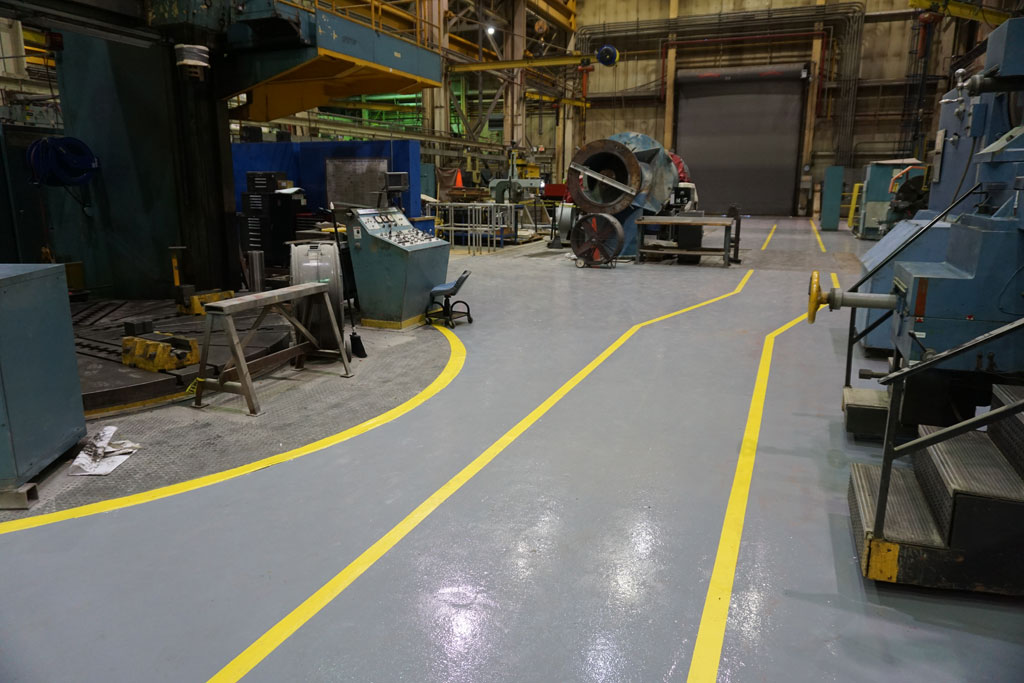
The topcoat, General Polymers 3746 High Performance Epoxy, was chosen for its impact, abrasion, and chemical resistance and because of its durability. “Normally we use a urethane for the topcoat, in this instance the customer had specifications for a 100% solid epoxy able to withstand highly corrosive chemicals.” Smedley said. The product was installed using a squeegee and back rolled with a ⅜” nap roller at a spread rate of 100 sq. ft. per gallon to yield 21 mils thickness.
On the third day, the facility was operational which, required the High Performance crew to put up traffic cones and caution tape to ensure worker safety. Yellow Macropoxy 646 Fast Cure Epoxy was rolled out to create line striping that directed forklift traffic, to marquee out fire, and eyewash stations. Often, facilities will try to save money, but end up spending more, by using paint or tape to fabricate line striping. The problem with that is paint and tape do not bond to the epoxy, so they will quickly wear and come off. Epoxy line striping, on the other hand, directly bonds to the topcoat so it has a very long lifespan and only needs to be replaced when the floor does. To get the line striping to bond it needs to be applied before the top coat has fully cured. The topcoat takes about 48-72 hours to fully cure but after 24 hours it will be “dry to touch.” “I can walk on it the next day but if I put down any coating system on top it will still adhere to it because it hasn’t fully cured,” Smedley said.
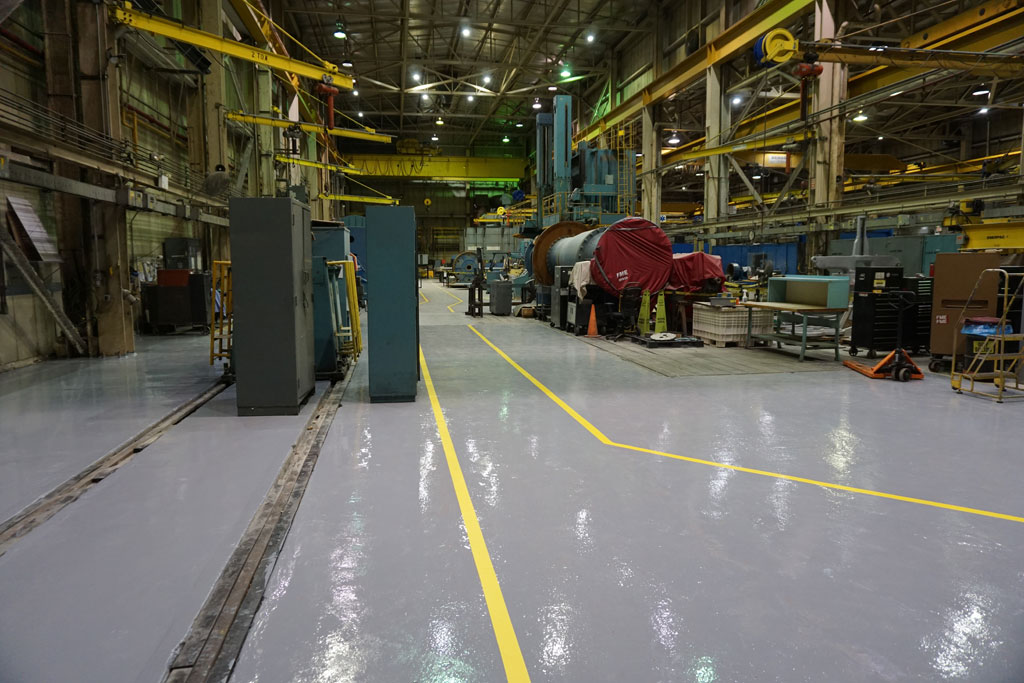
Even though High Performance had to deal with sub-freezing temperatures and extensive surface preparation, they still managed to finish the project on time. In the end, the electrical generation facility was left with a long-lasting, chemical resistant, line striped floor.

